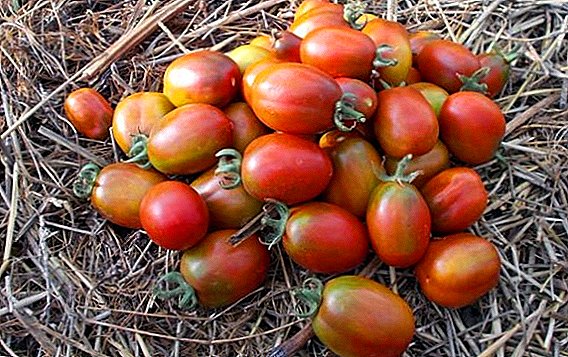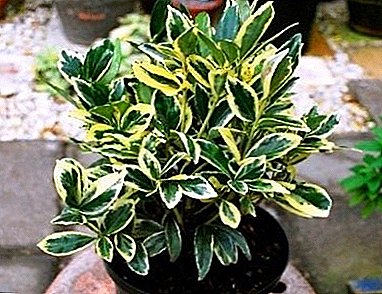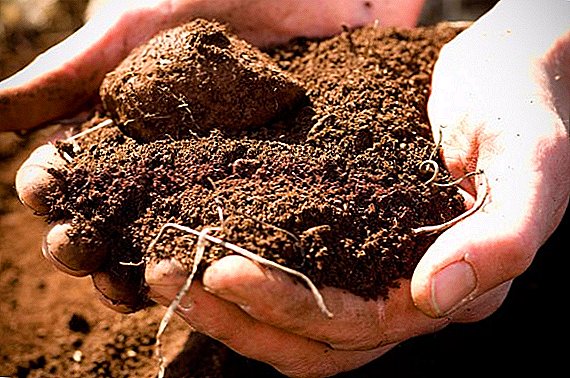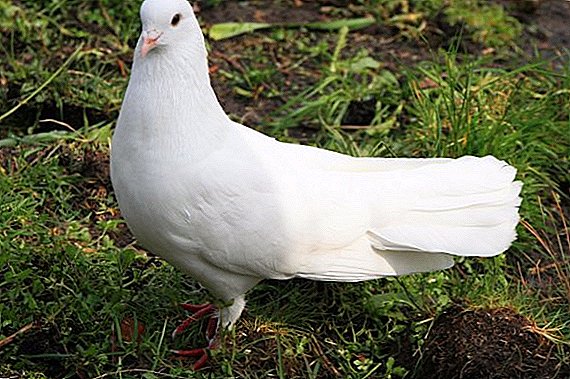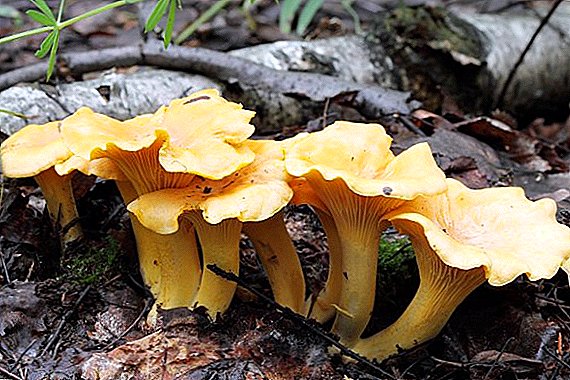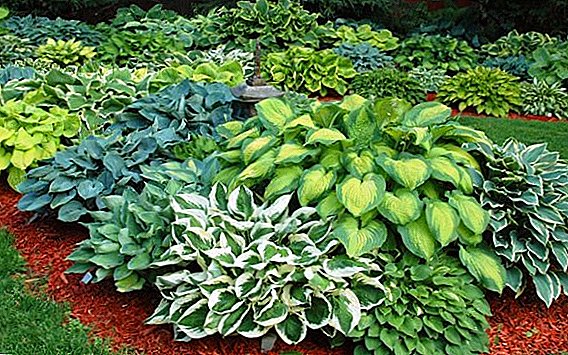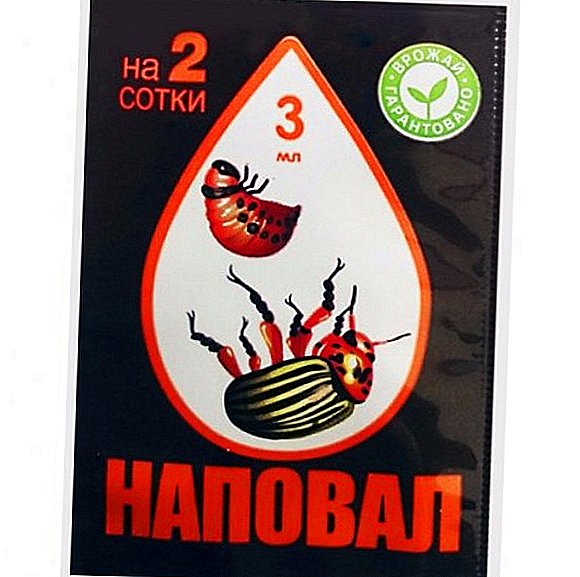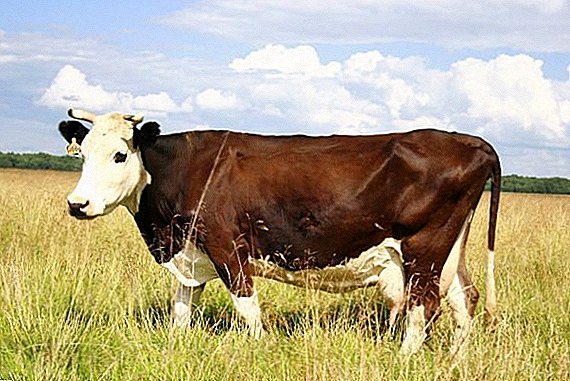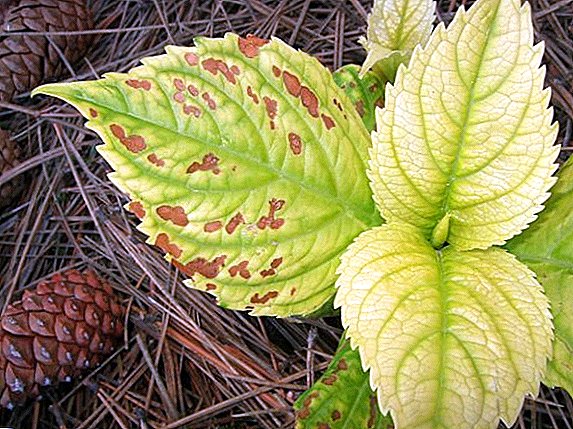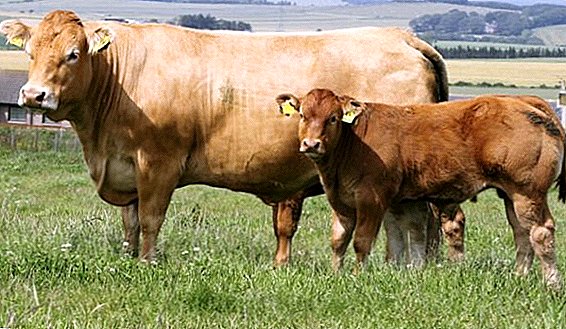 True connoisseurs of cattle breeds could not help but pay attention to such majestic animals as Limousin cows. On private farmsteads, they are rarely met, but in the conditions of large farms they become more and more popular.
True connoisseurs of cattle breeds could not help but pay attention to such majestic animals as Limousin cows. On private farmsteads, they are rarely met, but in the conditions of large farms they become more and more popular.
What is remarkable such animals and what you need to know about the features of care for them - read on.
Breed history and description
Limousin was flooded on the territory of the former Soviet Socialist Republic only in the 60s of the last century, when one of the breeding farms in the Brest region took up breeding these cows. However, before this, these animals were already known far abroad: in America, Australia, some European countries.
Origin
The limousine cows owe their name to one of the regions of France (Limousin), where they were bred by local breeders in the middle of the 18th century. At this time, only born active experiments on obtaining cattle, which has increased endurance and good weight gain with a relatively poor diet.  Among the ancestors of modern "limousines" should pay attention to Aquitaine cattle, which always stood out for its strength and endurance.
Among the ancestors of modern "limousines" should pay attention to Aquitaine cattle, which always stood out for its strength and endurance.
Did you know? In 1856, limousine cows received their own breeding book, and the best representatives began to take part in various exhibitions.The centuries of continuous selective work were not in vain, and today the described animals are distinguished by a rather high productivity and excellent taste of meat that can compete with the production of elite breeds.
External signs
It is simply impossible to confuse a limousine with an ordinary domestic burenka, because the majestic look of these animals speaks of their long history. The color of the representatives of the breed conveys the whole palette of golden-brown shades, and the body build more closely matches the representatives of the meat direction.  Bull Limousine breed In general, limousine breed cows can be characterized using the following characteristics:
Bull Limousine breed In general, limousine breed cows can be characterized using the following characteristics:
- the body is massive and dense;
- body - slightly extended in front;
- legs are strong, of medium length;
- head is short, with massive frontal part;
- horns - light, short, grow in a downward direction;
- udder - underdeveloped;
- subcutaneous fat - in small quantities.
Important! Pigmentation and black spots, however, like the white areas on the animal's face are considered a breed defect.
Meat and Dairy Indicators
Mostly limousine cows are bred in order to produce tasty meat, but the milk production of animals cannot be called very low.  The following data on meat and dairy indicators of the described breed will help to verify this:
The following data on meat and dairy indicators of the described breed will help to verify this:
- milk yield per year - not more than 1700 l, with a fat content of 4.8-5%;
- weight gain - daily calves gain up to 1300 g, but at birth their weight is relatively small and amounts to only 30-40 kg;
- meat slaughter - up to 70% in adult bulls (at the age of 12-14 months, the males weigh about 500 kg);
- meat quality - high.
Read also about the features of other breeds of meat: Kazakh white-headed, Hereford, Kalmyk, Highland, Belgian blue.
Advantages and disadvantages
Having carefully studied the characteristics of the breed Limousine, it is easy to note the advantages of breeding these animals.  First of all they include:
First of all they include:
- rapid growth and weight gain in calves;
- good meat slaughter;
- excellent reproductive performance;
- well-developed immunity and excellent resistance to typical diseases of cattle;
- well-developed maternal instinct of cows;
- unpretentiousness to the conditions of detention;
- high adaptive capabilities to any climatic conditions, in particular, the ability to tolerate long winter frosts well;
- calving ease
Learn about the best breeds of cows meat and dairy.
As for breed deficiencies, in the case of limousine cows, they are expressed perhaps in the high aggressiveness of the bulls and the equally aggressive behavior of females during the period of calf rearing. In addition, the sexual hunt in females is weakly expressed and it is often necessary to call it artificially, which significantly complicates the insemination process.
In addition, the sexual hunt in females is weakly expressed and it is often necessary to call it artificially, which significantly complicates the insemination process.
Did you know? At home, cows usually give birth to no more than two calves at a time, but according to historical data, back in 1939 the cow gave birth to 16 cubs, among which only one turned out to be fully mature.
Maintenance and care
As we mentioned earlier, among the advantages of breeding limousine breed cows, it is impossible not to single out their unpretentiousness to the conditions of detention. The only thing that you should definitely pay attention to when setting up the barn is dryness, warmth and cleanliness, with a sufficient number of drinkers and feeders.
Summer playground
Summer grounds for cows are usually equipped in places of walking cattle and provide for the organization of the required number of stalls (for each individual in the herd). This option is appropriate in the case of seasonal breeding of animals or when the farm is far away from good pastures. Being in the fresh air all day long, cows give more milk, and a shelter and a fence from several sides will help protect them from rain or other unpleasant weather phenomena.  Herd feeders This option of summer accommodation is suitable for representatives of the breed Limousine, the main thing is to provide the cows with free access to the troughs and feeders.
Herd feeders This option of summer accommodation is suitable for representatives of the breed Limousine, the main thing is to provide the cows with free access to the troughs and feeders.
Arrangement of premises
Limousin cows just need a spacious room, with a size of stalls of at least 6-8 square meters. m. on one animal. Of course, the entire room should be kept clean and dry, with regular replacement of bedding. It is desirable that the barn was a way out directly to the pasture, where in summer the animals will spend the whole day, and in winter only occasionally walk. As for the feeders and drinkers built into the barn, they can be of standard configuration, for example, along all the stalls or in the form of a hanging tank next to each cow.
Important! Some farmers believe that limousine cows can not be kept in stalls and they must move freely in the barn. In this case, group feeders are divided into cells using metal rods, leaving enough space between them so that the animal can quietly stick its head to the hay or grass.For the flooring, quite standard materials are also used (straw or sawdust), which are laid on a concrete base with a thirty-centimeter layer.
 Dimensions of a stall designed for one cow
Dimensions of a stall designed for one cowConditions of detention
Despite the fact that limousin breed cows are classified as undemanding animals, characterized by high adaptive abilities to the conditions of detention, it is still worth knowing about some nuances:
- if the thermometer's column drops below zero, it's time to transfer the animals to a heated room (the optimum temperature for keeping cows of the described breed is +7 ° C);
- drafts are unacceptable, therefore, to save the herd, it is necessary to close up even the smallest cracks in the barn;
- walking cows can be performed even at low temperatures (down to -35 ° C), but prolonged exposure to such conditions is fraught with the development of colds;
- humidity in the barn with Limousines should be at least 50%, and a very important is the constant flow of fresh air, which is often equipped with ventilation systems.

Regular cleaning of the stall and inventory
If the cows spend most of their time on pasture, then the stall and service equipment can be cleaned once a week. In winter, cleaning has to be done more often, since accumulation of excrement in the barn is unacceptable. After cleaning the manure do not forget to pay attention to litter, feeder and watering. In some cases, the flooring layer has to be changed daily or at least once every few days. Disinfection of feeders for dry food is carried out several times a month, but the drinkers are cleaned more often to prevent water blooming and reproduction of harmful microorganisms.
Read more about ways of keeping cows and the characteristics of grazing in the pasture.
Complete disinfection of the barn, with the treatment of the walls and all other surfaces is carried out several times a year, especially when it comes to large farm premises, designed for dozens of animals.
What to feed
No special feed limousine cows are not needed, and they are perfectly gaining weight on standard feed mixtures, hay and grass. However, when preparing a diet, it is very important to take into account the season in order to provide the animal's body with the maximum amount of useful trace elements and vitamins.
Summer walking in the pasture
One cow of this breed per day accounts for about 50-70 kg of feed, which is explained by the rapid weight gain. In the summer, the lion's share of this value is occupied by grass, which animals can easily reach when grazing on pastures. The main thing to pay attention to is the absence of foreign objects in the selected area in the form of plastic bags, paper and other debris that can get stuck in the digestive system of animals.  In addition to fresh grass, it is useful to give Limousin cows about 3 kg of hay (per individual per day) and 2 kg of concentrates, supplementing the diet with root vegetables (it is especially useful to give carrots, beets, Jerusalem artichoke and potatoes).
In addition to fresh grass, it is useful to give Limousin cows about 3 kg of hay (per individual per day) and 2 kg of concentrates, supplementing the diet with root vegetables (it is especially useful to give carrots, beets, Jerusalem artichoke and potatoes).
Important! Before issuing vegetables must be well washed and cleaned from the skin, and for better digestibility by the animal's body, you can additionally boil them.Drinking bowls of cows should always be filled with fresh and clean water, but if the cows are far from home, then they are watered twice a day, at the rate of 70-80 liters of water per cow. The pregnant women need liquid more often, so they are given water three times a day.
Differences in winter feeding
The main difference in the winter diet is the lack of fresh grass, which is usually replaced by hay, but at the same time there should not be more than 10 kg of such feed per day per cow. If possible, you can mix it with oat straw, which limousin cows are very fond of. Thus, you can reduce the cost of feed.  Bychkov, which the farmer plans to soon send for slaughter, are kept in separate pens, with a minimum of physical activity, but regular walking. The main component of their diet is concentrated feed (about 6 kg per head), melon vegetables (about two buckets per day), hay. Despite the fact that the material costs for the purchase of these feeds are quite high, animals grow several times faster and this justifies such an intensive method of fattening. Mostly bulls lead to slaughter at the age of 11-12 months, with a body weight of 700-800 kg.
Bychkov, which the farmer plans to soon send for slaughter, are kept in separate pens, with a minimum of physical activity, but regular walking. The main component of their diet is concentrated feed (about 6 kg per head), melon vegetables (about two buckets per day), hay. Despite the fact that the material costs for the purchase of these feeds are quite high, animals grow several times faster and this justifies such an intensive method of fattening. Mostly bulls lead to slaughter at the age of 11-12 months, with a body weight of 700-800 kg.
As for water, in winter one Limousin breed is about 45-50 liters.
Find out what determines the weight of cattle.
The approximate diet of limousine cows during their life is as follows:
- at monthly age, the calf feeds only on colostrum;
- from the second month of his life he was given hay and vegetables (together 500 g), as well as 100 g of cereal mixture per day (mother’s milk is still the basis of his diet and he can drink up to 10 liters per day);
- in the third month of life, the portion of milk is reduced to 5 liters per day, while the amount of hay, vegetables and grain mixtures produced is increased to 1.5, 2 kg and 300 grams, respectively;
- Nearly half a year, calves are completely transferred to adult food, giving them 3 kg of hay, 4 kg of root crops and 1 kg of grain mixture per day;
- after 7-8 months of life, young individuals can eat as much hay as they want, and their total ration is supplemented with 10 kg of vegetables (surely sliced) and 2 kg of grain mixture; these proportions should be kept up to ten months of age;
- in the future, the number of vegetables is increased to 12–15 kg per day, grains up to 5 kg, and the rest of the diet will be occupied by hay and silage in winter or fresh grass in summer.
 The main source of beneficial elements for calves among melons and gourds will be pumpkin and zucchini, and among root crops sugar beets and carrots deserve special attention. In winter, some vegetables can be replaced by haylage or silage, which animals eat with no less hunting.
The main source of beneficial elements for calves among melons and gourds will be pumpkin and zucchini, and among root crops sugar beets and carrots deserve special attention. In winter, some vegetables can be replaced by haylage or silage, which animals eat with no less hunting.
Important! Castrated gobies do gain weight faster, but at the same time their meat is much fatter than that of non-castrated males.Limousin cows are a good option for breeding in order to get a sufficiently large amount of tasty meat, but to make it really so, you will have to make some efforts to care and feed this breed of cattle, accepting a constant limited amount of milk his needs).


